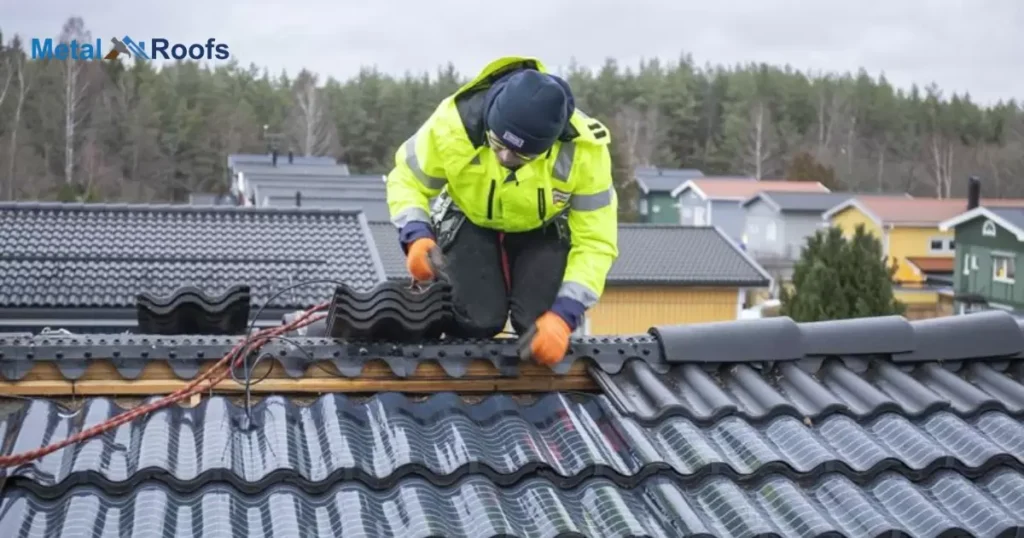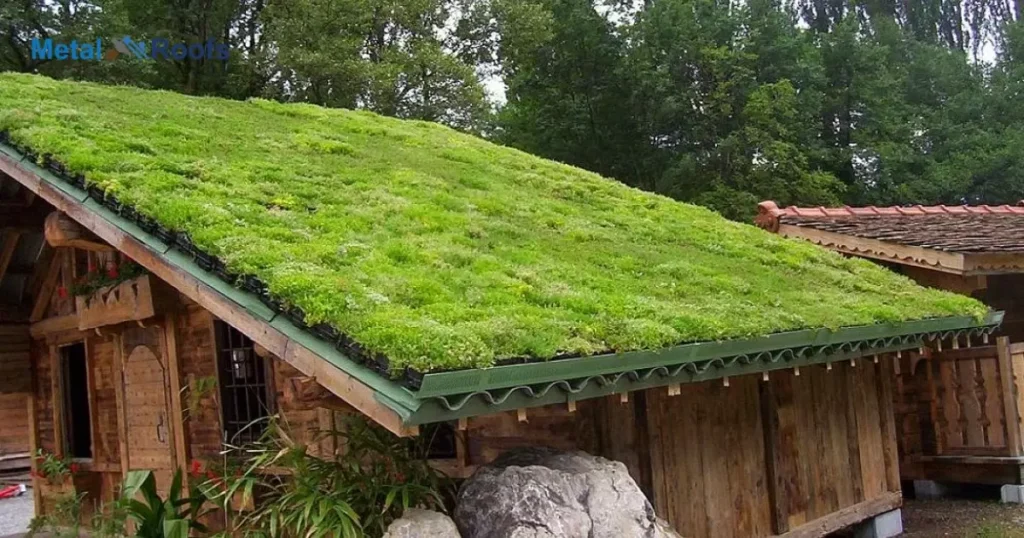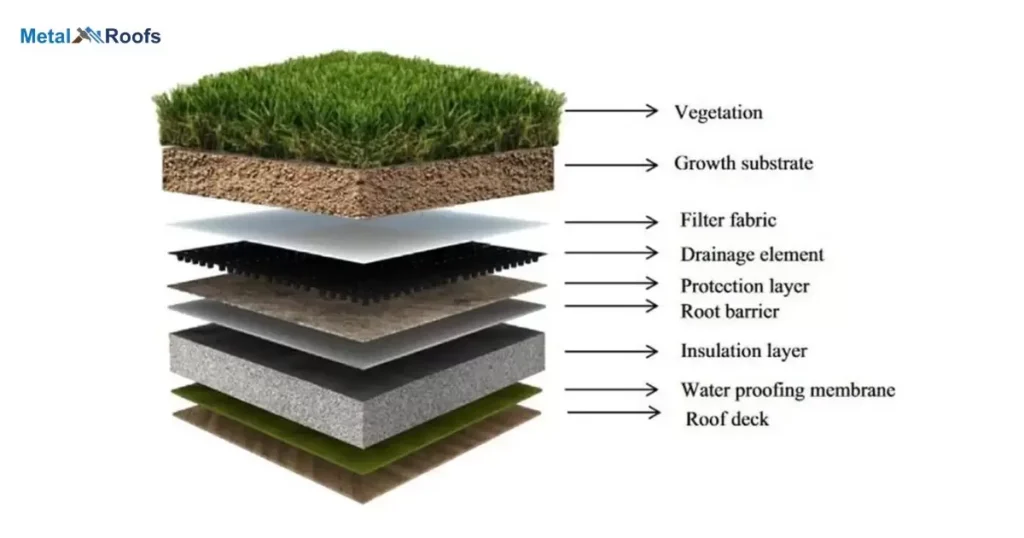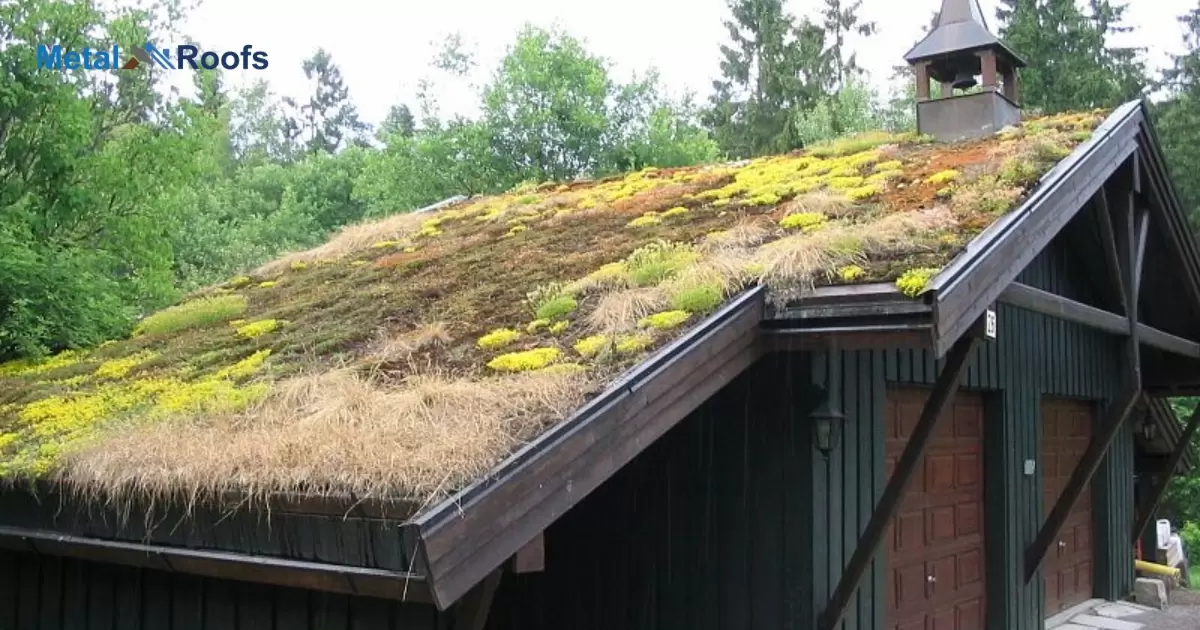Roof substrate is the surface that a roofing system is installed over. It provides the foundation for the roof assembly. Substrates are typically wood, metal, concrete, or an existing roof surface.
A roof demands a solid base to withstand the elements. This critical layer is called the roof substrate. It anchors shingles, membranes, and other roofing components securely in place.
The substrate is crucial for a stable roof system, sitting above the roof deck. It should be durable and water-resistant, accommodating various materials. In areas without gutters but with roof valley rain diverters, the substrate must effectively channel rainwater to prevent damage.
Key Takeaways
- The roof substrate is the foundational layer supporting roofing materials.
- Can be plywood, OSB, metal decking, concrete, or insulation boards.
- Present in both flat and sloped roofs, with variations in incline for water runoff.
- Proper installation is crucial for the durability and performance of the roofing system.
- Inadequate management can lead to rot and mold; some substrates resist moisture.
- Crucial for preventing moisture accumulation and issues like wood rot.
- The roofing material should be compatible with the substrate for optimal performance.
- Regular checks are essential to identify and address any substrate damage.
Why Do You Need To Consider Roof Substrates?
Choosing the right roof substrate matters. It affects your roof’s performance. Substrates provide the base for your roofing materials. Without a solid foundation, your roof won’t last.
Provides A Stable And Strong Foundation
A stable foundation is crucial for your roof. Roof substrates offer strength and support. They form the base for your roofing materials. Consider substrates to ensure a solid and durable overhead structure.
Increases The Lifespan Of The Roof
A solid roof substrate extends your roof’s life. It acts as a sturdy foundation. Without it, your roof faces premature wear. Choosing the right substrate ensures a longer-lasting, reliable overhead shelter.
Helps Prevent Moisture Infiltration
Roof substrates are crucial; they keep moisture out. Preventing infiltration safeguards your home. A solid substrate acts as a barrier. Choose wisely for a dry and secure shelter.
Types of Roofing Substrates
Roofing substrates, like plywood and OSB, form the foundation. Metal decking, common in commercial buildings, offers durability. Consider climate and budget when choosing between options like concrete, SIPs, or traditional wood planks.
Plywood
Plywood, a common roofing substrate, provides a sturdy base. Layers of wood veneers, glued together, create its strength. Resistant to warping and cracking, plywood withstands the elements. Widely used and reliable, it’s a solid choice for a durable roof.
SPF Substrates
SPF substrates are a smart choice. Foam insulation seals gaps and is energy-efficient. Lightweight, reducing structural stress. Consider SPF for a durable and efficient roofing solution.
Solid Timber Boards
Solid timber boards are a classic choice for roofing. Sturdy and traditional, they lend a timeless appeal. Regular maintenance is essential for longevity. Consider these if you prefer a traditional and enduring roofing substrate.
Concrete
Concrete, a robust roofing substrate, stands strong against the elements. Its weight is a consideration; it’s heavy but durable. Common on flat roofs, it provides stability. Ensure your structure supports the load before choosing concrete as your roofing base.
Metal
Metal roofing, a robust choice, is common in modern construction. Its durability withstands harsh weather conditions. Suitable for commercial buildings, it ensures long-term protection. Consider metal as a sturdy substrate option for a resilient roof.
Types Of Commercial Roofing Substrates

| Commercial Roofing Substrates | Characteristics |
| Plywood | Durable and common in commercial construction |
| SPF Substrates | Provides robust protection against harsh weather conditions and flexible and efficient solutions |
| Traditional Layered Approach | Offers strength and resilience |
| Cover Board | Acts as a protective layer for the roofing system and enhances resilience |
| Versatile Options | Cost-effective and weather-resistant |
- Durable and common in commercial construction.
- Provides robust protection against harsh weather conditions.
- Traditional layered approach.
- Offers strength and resilience.
- Flexible and efficient solutions.
- Cost-effective and weather-resistant.
Consider these types to match your specific needs for commercial roofing substrates.
What Are The Advantages Of Using A Roof Substrate Board?
Enhanced Durability: Provides a sturdy foundation for the roofing structure.
Improved Insulation: Acts as an additional layer for thermal insulation.
Ease of Installation: Simplifies the roofing process with a stable base.
Versatility: accommodates various roofing materials and systems.
Consider the advantages of using a roof substrate board for a durable, insulated, and versatile roofing solution.
What Type Should I Choose for My Roof?
Choosing the right roof is crucial. Consider your climate first. If you live where it’s hot, go for reflective materials. If it’s cold, prioritize insulation.
Next, think about durability. Asphalt shingles are common but may not last as long. Metal roofs are tough and can handle severe weather. Factor in your budget too.
Some materials are pricier upfront but save you money over time. Make an informed decision for a roof that lasts and fits your climate and wallet.
Roof Substrate Board
Roof substrate board is the solid foundation for your roof. It sits beneath your roofing materials, providing support and stability. Without a sturdy substrate board, your roof might not withstand the elements.
This essential layer helps distribute the weight of the roof evenly. It also adds an extra layer of insulation, keeping your home comfortable. Choosing the right roof substrate board is crucial for the long-term health of your roof.
Substrate Board Vs Cover Board
Substrate board and cover board play distinct roles in roofing. Substrate board forms the base layer, providing structural support. It sits directly on the roof deck, offering a solid foundation. In contrast, the cover board sits on top of the insulation, serving as a protective layer for the roofing system.
While substrate board focuses on strength and stability, cover board emphasizes protection against moisture and other elements. Substrate board helps distribute the load, ensuring the roof’s durability.
The cover board acts as a shield, safeguarding the insulation and enhancing the roof’s resilience. Together, these two components contribute to a robust and well-protected roofing system.
How Do You Install Green Roof Substrates?

To install green roof substrates, start by preparing the roof surface. Clear any debris and ensure proper drainage. Next, spread a layer of geotextile fabric to prevent soil erosion.
Now, add a lightweight growing medium, such as peat or coconut coir, evenly across the roof. Make sure it’s at least 4 inches deep.
Gently pat down the substrate to create a level surface. Finally, plant your greenery, choosing plants that thrive in your climate. Regular watering and minimal maintenance will keep your green roof flourishing.
What Is Roof Substrate Made Of?

Roof substrate is typically made of materials like plywood, oriented strand board (OSB), or metal decking. These materials provide a solid base for the roof covering. They are sturdy and support the weight of the roofing materials and any potential loads like snow or debris.
Plywood and OSB are commonly used in residential construction, while metal decking is more prevalent in commercial buildings. Each material has its strengths and can be chosen based on factors like cost, durability, and local building codes. Overall, the roof substrate is crucial for a stable and long-lasting roof structure.
Frequently Asked Questions
What is substrate in green roof?
In a green roof, the substrate refers to the growing medium that supports vegetation. It provides a nourishing environment for plants while aiding in water retention and drainage.
What is deck substrate?
Deck substrate is the foundational layer beneath roofing materials, providing structural support to the roof. It serves as a solid base, ensuring stability and durability for the overall roofing system.
Which material is used as a substrate?
The material commonly used as a substrate is plywood. It provides a solid base for roofing materials and contributes to the overall strength of the roof.
Conclusion
A roof is only as strong as its foundation. The substrate forms this key supportive layer. It goes on top of the roof decking. Then roofing components get installed above. Proper substrate prevents leaks and blow offs.
Many materials can work as substrates. Plywood, OSB, metal, and old shingles are options. Substrates must support roof loads. They also anchor the roofing layers. Choosing the right substrate prevents roof system failures.











